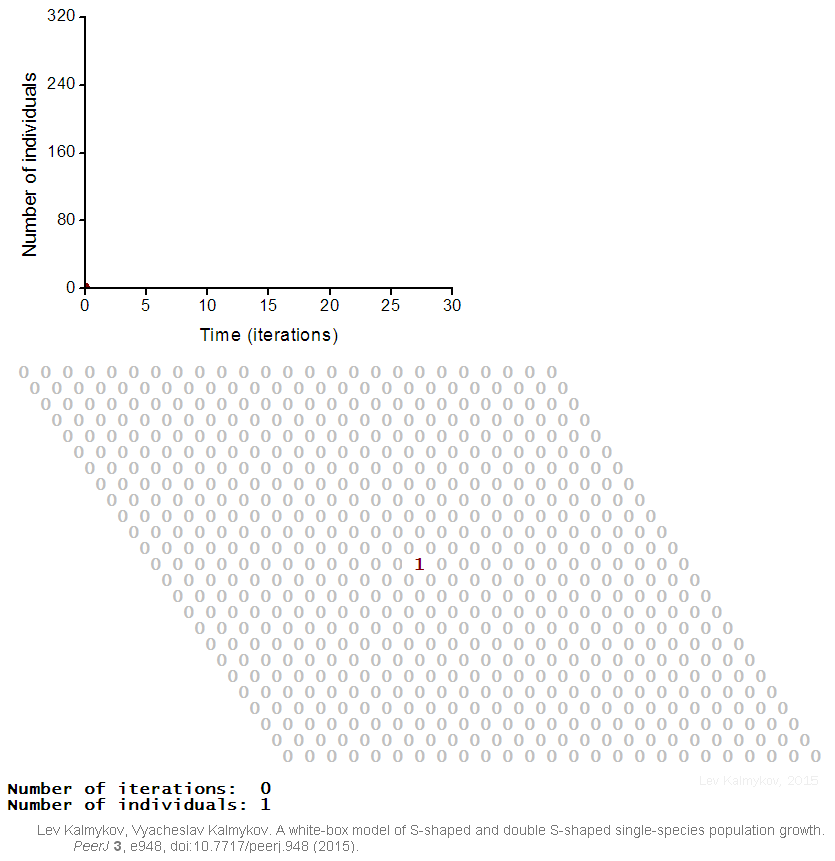Population modeling on:
[Wikipedia]
[Google]
[Amazon]
A population model is a type of


GreenBoxes code sharing network
Greenboxes (Beta) is a repository for open-source population modeling code. Greenboxes allows users an easy way to share their code and to search for others shared code. {{DEFAULTSORT:Population Modeling Conceptual models Population models
mathematical model
A mathematical model is an abstract and concrete, abstract description of a concrete system using mathematics, mathematical concepts and language of mathematics, language. The process of developing a mathematical model is termed ''mathematical m ...
that is applied to the study of population dynamics.
Rationale
Model
A model is an informative representation of an object, person, or system. The term originally denoted the plans of a building in late 16th-century English, and derived via French and Italian ultimately from Latin , .
Models can be divided in ...
s allow a better understanding of how complex interactions and processes work. Modeling of dynamic interactions in nature can provide a manageable way of understanding how numbers change over time or in relation to each other. Many patterns can be noticed by using population modeling as a tool.
Ecological population modeling is concerned with the changes in parameters such as population size and age distribution within a population. This might be due to interactions with the environment, individuals of their own species, or other species.
Population models are used to determine maximum harvest for agriculturists, to understand the dynamics of biological invasions, and for environmental conservation Environmental conservation may refer to:
* Environmental protection
* Nature conservation
{{disambiguation ...
. Population models are also used to understand the spread of parasites, viruses, and disease
A disease is a particular abnormal condition that adversely affects the structure or function (biology), function of all or part of an organism and is not immediately due to any external injury. Diseases are often known to be medical condi ...
.
Another way populations models are useful are when species become endangered. Population models can track the fragile species and work and curb the declineHistory
Late 18th-century biologists began to develop techniques in population modeling in order to understand the dynamics of growing and shrinking of all populations of living organisms.Thomas Malthus
Thomas Robert Malthus (; 13/14 February 1766 – 29 December 1834) was an English economist, cleric, and scholar influential in the fields of political economy and demography.
In his 1798 book ''An Essay on the Principle of Population'', Mal ...
was one of the first to note that populations grew with a geometric pattern while contemplating the fate of humankind. One of the most basic and milestone models of population growth was the logistic model of population growth formulated by Pierre François Verhulst
Pierre François Verhulst (28 October 1804, in Brussels – 15 February 1849, in Brussels) was a Belgian mathematician and a doctor in number theory from the University of Ghent in 1825. He is best known for the logistic growth model.
Logisti ...
in 1838. The logistic model takes the shape of a sigmoid curve and describes the growth of a population as exponential, followed by a decrease in growth, and bound by a carrying capacity
The carrying capacity of an ecosystem is the maximum population size of a biological species that can be sustained by that specific environment, given the food, habitat, water, and other resources available. The carrying capacity is defined as the ...
due to environmental pressures.
Population modeling became of particular interest to biologists in the 20th century as pressure on limited means of sustenance due to increasing human populations in parts of Europe were noticed by biologist like Raymond Pearl. In 1921 Pearl invited physicist Alfred J. Lotka to assist him in his lab. Lotka developed paired differential equations that showed the effect of a parasite on its prey. Mathematician Vito Volterra equated the relationship between two species independent from Lotka. Together, Lotka and Volterra formed the Lotka–Volterra model for competition that applies the logistic equation to two species illustrating competition, predation, and parasitism interactions between species. In 1939 contributions to population modeling were given by Patrick Leslie as he began work in biomathematics. Leslie emphasized the importance of constructing a life table in order to understand the effect that key life history strategies played in the dynamics of whole populations. Matrix algebra was used by Leslie in conjunction with life tables to extend the work of Lotka. Matrix models of populations calculate the growth of a population with life history variables. Later, Robert MacArthur and E. O. Wilson characterized island biogeography. The equilibrium model of island biogeography describes the number of species on an island as an equilibrium of immigration and extinction. The logistic population model, the Lotka–Volterra model of community ecology, life table matrix modeling, the equilibrium model of island biogeography and variations thereof are the basis for ecological population modeling today.
Equations
Logistic growth equation: : Competitive Lotka–Volterra equations: : Island biogeography: : Species–area relationship: :Examples of individual-based models


See also
* Population dynamics * Population dynamics of fisheries *Population ecology
Population ecology is a sub-field of ecology that deals with the dynamics of species populations and how these populations interact with the environment (biophysical), environment, such as birth rate, birth and death rates, and by immigration an ...
* Moment closure
References
External links
GreenBoxes code sharing network
Greenboxes (Beta) is a repository for open-source population modeling code. Greenboxes allows users an easy way to share their code and to search for others shared code. {{DEFAULTSORT:Population Modeling Conceptual models Population models